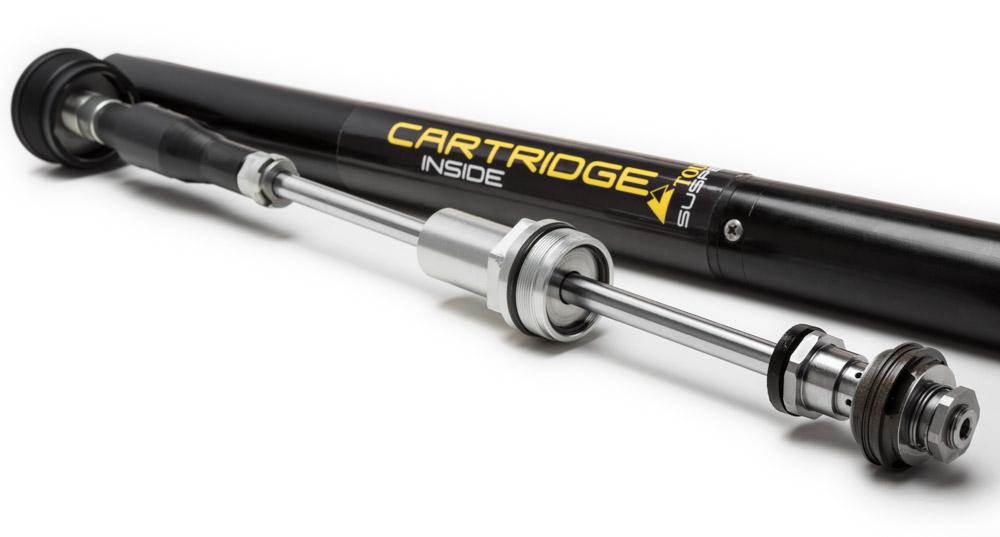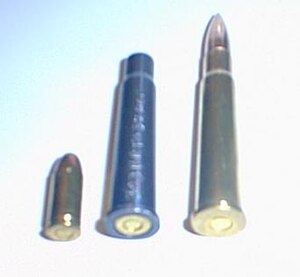Manual Of Cartridge Conversion
There's a closeout store called Ollie's in Florence, KY and my wife and I went in there yesterday to kill some time before the movies. I was looking at the selection of cheap overstock books when I spied what looked like a picture of a reloading press on the cover of one. Suffice to say I'm now the owner of the fourth edition of The Handloader's Manual of Cartridge Conversions for the grand sum of $6.99.
What an interesting book! The vast majority of the 600+ pages are descriptions of how to make one case from another, but there's a short front section about general reloading as well. Some of the front section also deals with esoteric stuff particular to cartridge conversion like lathe cutting cases, fireforming, bumping bullets, etc. If you happen to live in the northern KY area I highly recommend you stop in at Ollie's and pick up a copy. There were 6-7 other copies on the shelf as of yesterday evening.
IMPORTANT DISCLAIMER Although The High Road has attempted to provide accurate information on the forum, The High Road assumes no responsibility for the accuracy of the information. All information is provided 'as is' with all faults without warranty of any kind, either express or implied. Neither The High Road nor any of its directors, members, managers, employees, agents, vendors, or suppliers will be liable for any direct, indirect, general, bodily injury, compensatory, special, punitive, consequential, or incidental damages including, without limitation, lost profits or revenues, costs of replacement goods, loss or damage to data arising out of the use or inability to use this forum or any services associated with this forum, or damages from the use of or reliance on the information present on this forum, even if you have been advised of the possibility of such damages.

Creating brass for rare and obsolete cartridges is easier than you think. Here's what you need to know to create your own at home. What You Need To Know About Making Brass:. Opens door to obscure and rare calibers. The Handloader’s Manual of Cartridge Conversions is an indispensable tool. Can be as complex as removing a belt from a magnum.
Can be as simple as resizing a cartridge's neck.There are times when certain cartridge cases are just unavailable, if not simply unaffordable. I ran into just this situation while I was looking for ammunition for a new rifle I’m having built. I’ve had a desire to own and hunt with a.318 Westley Richards since I first began to read the classic African stories of W.D.M.
Cartridge Conversion Cylinders
‘Karamoja’ Bell and John ‘Pondoro’ Taylor (there’s something cool about earning an African nickname, eh?) as they recounted their tales and experiences with the classic cartridges. Left: 250-gr.
Woodleigh RN. Right: 200-gr. Hawk RNIn all honesty, there’s really nothing revolutionary about the classic.318 Westley Richards; it shoots a.330-inch diameter bullet, with the choices being between 180-, 200- and 250-grains, depending on the manufacturer, the classic load being a 250-grain round nose at 2,400 fps muzzle velocity.

The.318 WR is the older cousin to the.338-06, with the latter having a much wider selection of bullets, but the former making you want to lift your pinky in the air when you sit down to afternoon tea. At any rate, I think it’s a cool cartridge, and I am an aficionado of the classics. My rifle is still in the construction phase, going through its metamorphosis at Hillbilly Custom Rifles, and I needed some dummy ammunition to test the magazine length and the new chamber. This posed a bit of a problem: There are very few sources for.318 Westley Richards brass. The dies were no problem—RCBS makes a great set of full-length dies—and there are some good bullets on the market.
I’ve chosen the Woodleigh 250-grain round nose Weldcore as an all-purpose bullet, as well as a nice 200-grain round nose from Hawk Bullets in New Jersey, which would work perfectly for deer and lighter game. But the brassThere are a couple boutique brass producers that will make a run of properly headstamped.318 WR brass, but those runs are few and far between, not to mention expensive. There is a British company still making loaded ammunition, but at almost $10 per cartridge, that wasn’t exactly the route I wanted to take either. So, I dug out my well-thumbed-through copy of John J. Donnelly’s The Handloader’s Manual Of Cartridge Conversions a fantastic reference book that every handloader should own, and read about the process of making.318 Westley Richards brass out of good ole plentiful.30-06 Springfield brass. It wasn’t difficult at all. More Reloading Info:.

The Flexible And Forgiving. The: A Wheelgun Classic.: The Answer To Most Hunting Questions. Tips For Reloading theFirst, let me explain the differences between the two. The.30-06 shares a case head diameter with the 7×57 and 8×57 Mauser (0.473 inches), while the.318 WR uses a slightly smaller rim dimension of 0.464 inches, though in the past the Mauser-sized rim has worked fine in a.318 rifle’s bolt face. Since my new rifle is using the action from a 1916 Hamburg Arsenal 98 Mauser originally chambered in 8×57 Mauser, using the larger rim diameter will not pose an issue at all.
The ’06 is definitely a longer case at 2.494 inches, so it would eventually need to be trimmed down to the WR’s length of 2.400 inches. I grabbed a bunch of RP.30-06 cases, used the RCBS Universal Case Prep Station to trim the brass down 0.094 inches—the micrometer adjustment worked perfectly for this—and gave the case mouths a good chamfer and deburring. Other than that, the dies would do the bulk of the work. A must-have for any making your own brass, John J. Donnelly’s The Handloader’s Manual Of Cartridge Conversions.I compared them to the two example.318 WR cases I had from Quality Cartridge, and they showed to be dimensionally identical. I loaded some bullets into unprimed and uncharged cases, and sent them off to Hillbilly Rifles to make sure everything was going well with the new barreled action, and they worked just perfect.Making brass for rare or obsolete calibers certainly isn’t something new; handloaders have been doing this for decades, and it can turn a wall-hanger rifle into a field champion once again. Sometimes the conversion is easy and only requires a single pass through a resizing die.
Manual Conversion Cost
The.318 WR above is an example, but just as easy would be making.257 Roberts brass from a 7×57 Mauser or a 6mm Remington case, or.338-06 and.35 Whelen from.30-06 brass. I’ve made ammunition for an older.30/.338 Magnum by obtaining a good set of dies with a tapered expander ball and using 7mm Remington Magnum brass. Other times a set of forming dies, which will reduce or expand the brass in smaller steps, will be required to best achieve the goal. Cases for the old.33 Winchester can be made from.45-70 Government brass, but in several steps, as the reduction from.458-inch diameter to.338-inch diameter is too radical to be accomplished in a single pass.Some of the more advanced and radical transformations may require some advanced tools, as there are instances where a rim may need to be turned down to a different diameter, or a belt taken off in order to make something that will work. A good dial or digital caliper is a must, and like any handloading setup, the better your trimmer is, the more uniform your product will turn out. One last note: When you make brass for one cartridge from another, with a different headstamp, please be sure and keep that new ammo in a clearly marked box, with detailed notes. While I don’t think my.318 WR ammo would chamber in a.30-06 rifle, if it did and were fired, the results would be tragic, if not fatal.I strongly suggest you grab a copy of Mr.
Donnelly’s book, as it contains the formulae for making all sorts of wildcats in addition to the SAAMI accepted cartridges, as well as many of the older black powder cartridges. You never know when you may find a treasure in the form of a rare rifle in the dusty corner of your favorite gun shop, and you’ll be happy to have the ability to make your own brass. Massaro is the President of, a custom ammunition company, which is comfortably nestled in between the Hudson River and Catskill Mountains of Upstate New York. He has been handloading ammunition for 20+ years, and has loaded a wide range of pistol and rifle ammunition, from the lightest plinking loads through the heavy hitting cartridges designed for animals that are measure in tons.
Cartridge Conversion Pistols
He is a Licensed Professional Land Surveyor by trade, a musician by choice, and usually reeks of Hoppes No.